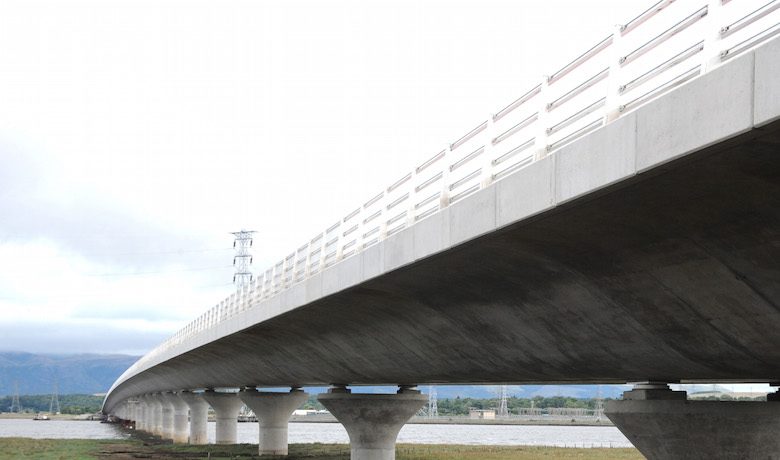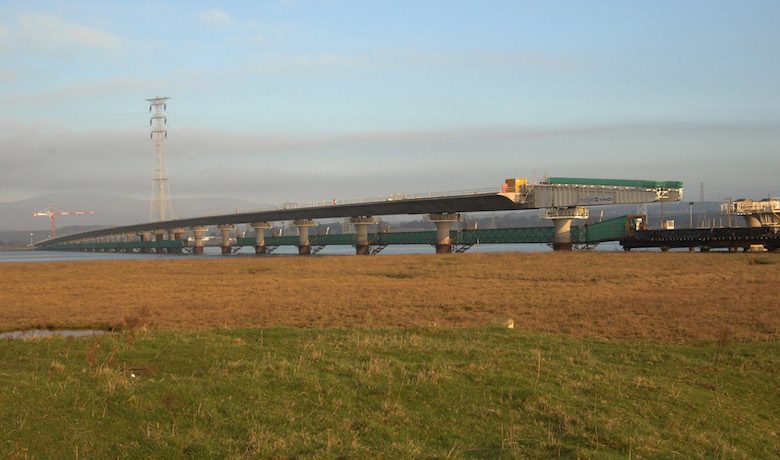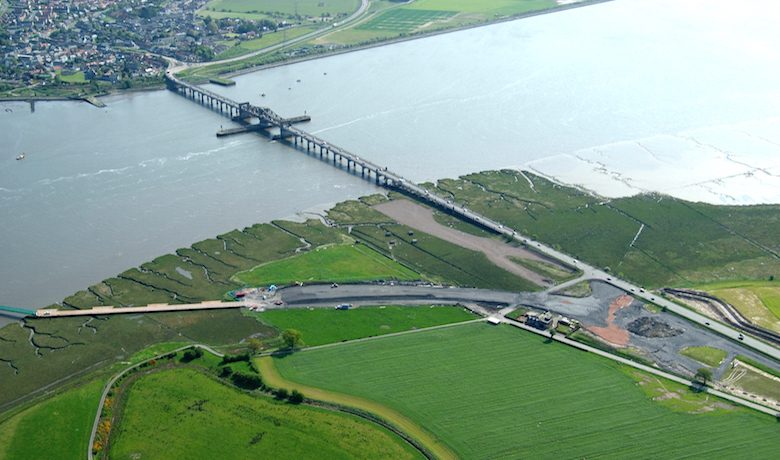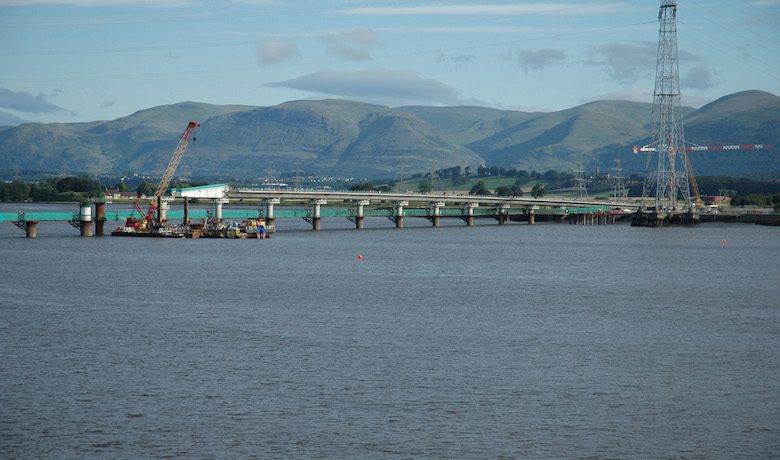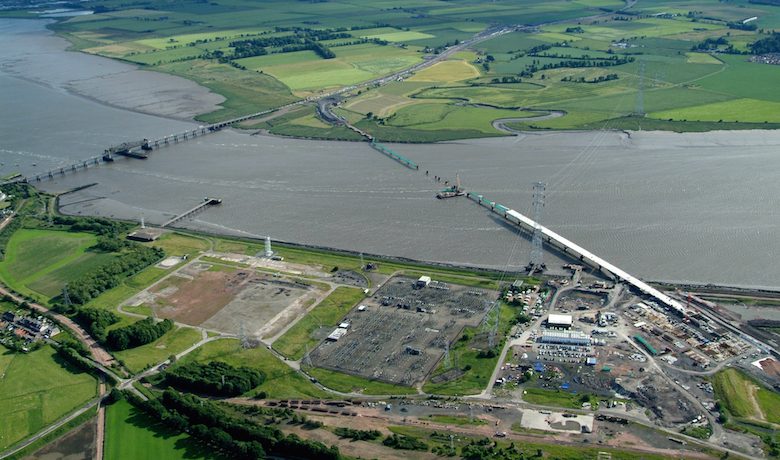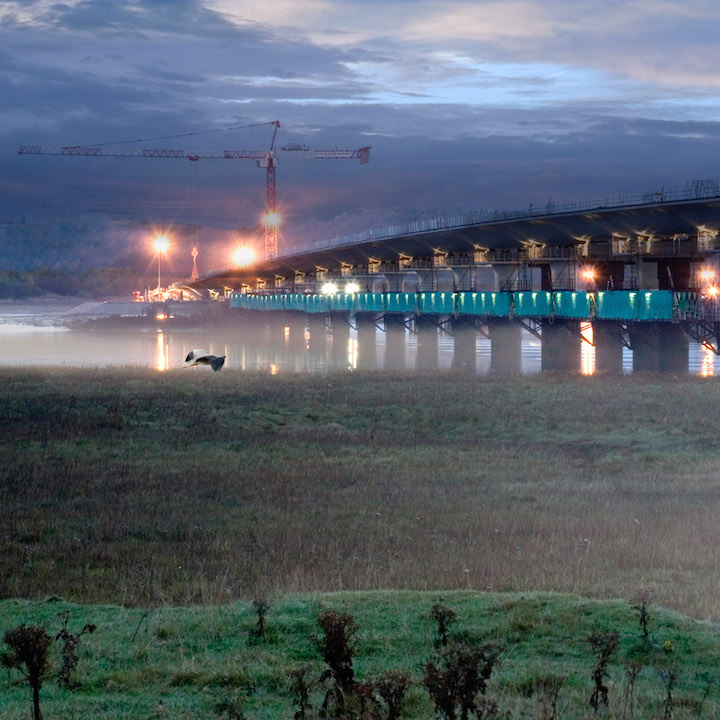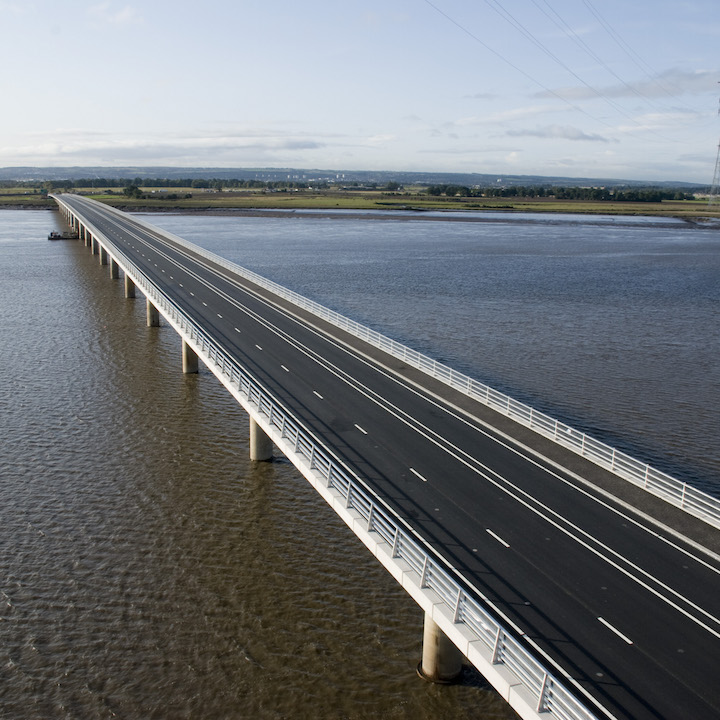BACKGROUND
An initial crossing over the Firth of Forth at Kincardine was opened for traffic in 1936. The Scottish government decided on the construction of a new bridge, known as the Upper Forth Crossing At Kincardine, upstream from the existing span. This new crossing was used initially only to allow repairs to the existing bridge. Once both bridges were in service, the result was improved traffic flow thanks to the separation, on the one hand, of traffic in southern and northwestern Scotland, and, on the other, southern and northeastern traffic. The advantage of the “two-bridge strategy” is that it makes optimal use of existing infrastructure (a 70-year-old bridge that is 500 m long), relieves Kincardine of excess traffic from the west and east, and paves the way for economic benefits while providing a solution with a low environmental impact. The new bridge is nearly twice as long as the old one due to its 45° inclination with respect to the south bank of the river.


